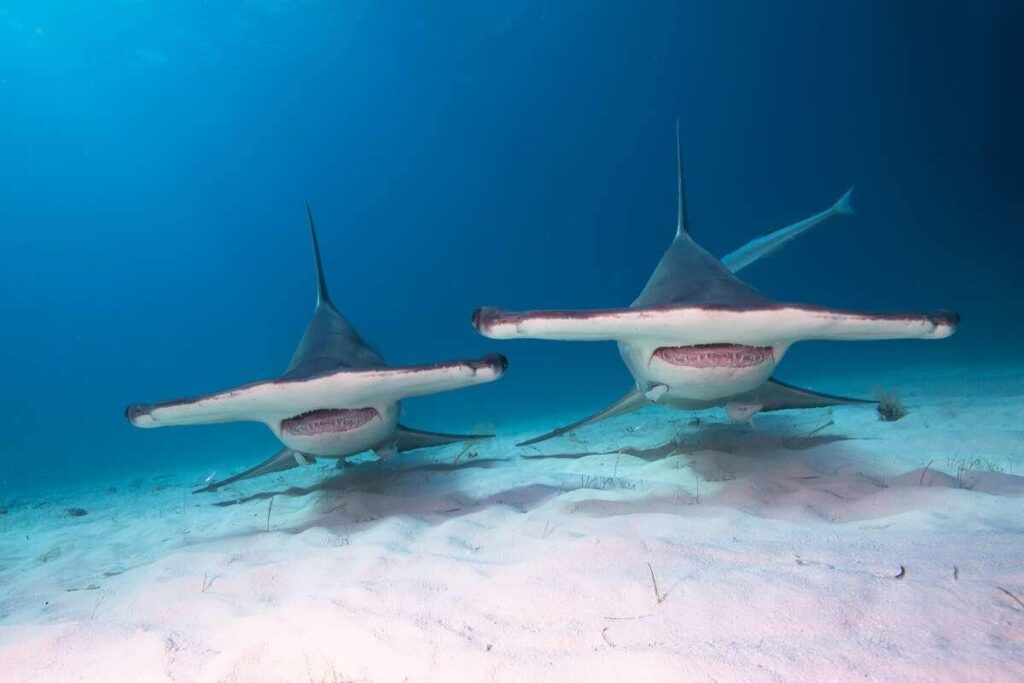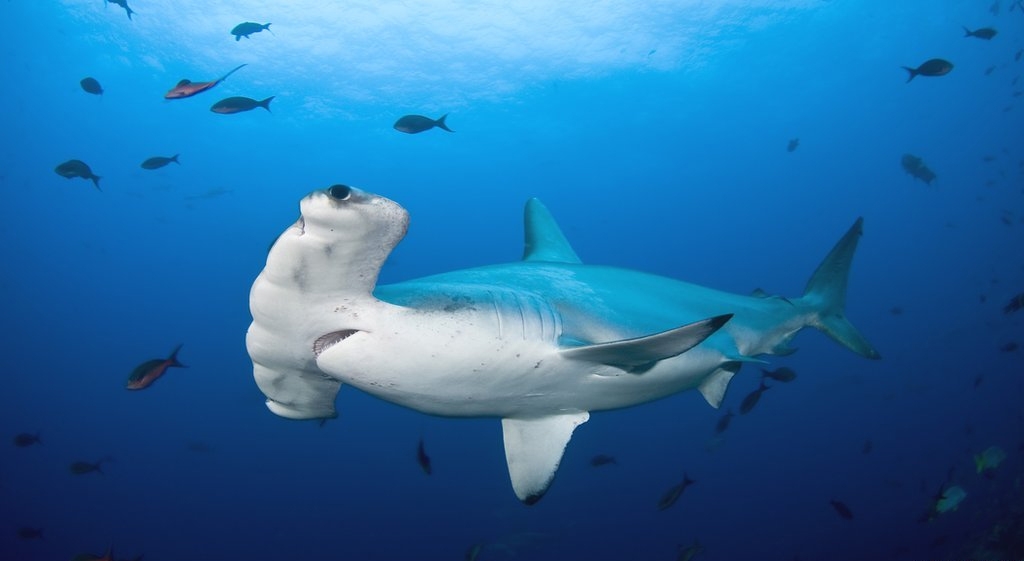CITES 2022 CoP19 Protection for ALL Hammerhead Sharks
Lawrence Dale Cooper
Hammerhead Sharks are named for their famous, unique heads, which are flattened and laterally extended into a “hammer” shape called a cephalofoil. Many different, but not necessarily mutually exclusive, functions have been postulated for the cephalofoil, including sensory reception, manoeuvering, and prey manipulation. Hammerheads are found worldwide in warmer waters along coastlines and continental shelves.
Why hammerheads are of concern:
Hammerhead sharks are Apex predators; they’re at the top of the food chain, without natural predators. They play a critical role in ocean ecosystem health by culling weak individuals from fish shoals and balancing species diversity. Reproduction occurs only once a year for Hammerhead sharks. They are viviparous, meaning females give birth to live young. Litters are quite small, usually consisting of 12 to 15 pups, except for the great hammerhead, which gives birth to litters of 20 to 40 pups. This slow, low reproductive rate means they are susceptible to over exploitation.
Hammerheads are often targeted by the fin trade and most commonly traded internationally in the form of dried and unprocessed fins. All hammerhead species have a characteristic fin shape that distinguishes them from all other sharks; however, visually separating species of hammerhead based on their fins is much more challenging.

CoP16 saw the successful proposal to include the scalloped hammerhead (S. lewini), great hammerhead (S. mokarran), and smooth hammerhead (S. zygaena) in CITES Appendix II, with the belief that they were the only species in international trade, due to their superior size.
But further research demonstrated that smaller‐bodied hammerhead species are also being internationally traded for their fins. This exposes the three CITES-listed large-bodied hammerhead species (S. lewini, S. mokarran, and S. zygaena) to illegal trade, because their fins may be hidden in shipments of “lookalike” species from the wider family.
This lookalike issue was acknowledged by the FAO in their analysis of the CoP16 hammerhead listing proposal, which stated, “it is not clear why the other species in the family Sphyrnidae were not proposed to be listed as “look-alikes”.
Why this proposal is needed:

This proposal will assist in closing the lookalike loophole for the three species of hammerheads listed in CITES Appendix II at COP16.
It has also been pushed for the dramatic decline of another hammerhead species, not currently protected by CITES. The bonnet head (S. tiburo). IUCN data shows that over the last three generations this species has declined by 50-79%, leading to a recent reclassification from ‘least concern’ to ‘critically endangered’. It has already been expatriated from parts of its former range, almost qualifying it for listing on CITES Appendix I.
It’s also worth noting that the other hammerhead species are in decline. The winghead shark (E. blochii), the smalleye hammerhead (S. tudes) is listed by the IUCN as globally endangered, and the scoophead shark (S. media) and the scalloped bonnethead (S. corona) are listed as globally critically endangered. The Carolina hammerhead (S. gilberti) is considered data-deficient.
This proposal is the inclusion of remaining species in the Family Sphyrnidae (hammerhead sharks) including: Sphyrna media, Sphyrna tudes, Sphyrna corona, Sphyrna gilberti, and Eusphyra blochii, as well as any other yet to be identified species of the Family Sphyrnidae, into Appendix II. This listing will allow these heavily exploited species to recover, and put in place restrictions to prevent other species from reaching the point of serious decline.
The full Proposal, CoP19 Prop. 38, can be found at: Proposal for amendment of Appendix I or II for CITES CoP19
What Sea Save Foundation Is Doing
We are working with delegates at this year’s conference to enact changes to international trade of endangered species that will protect them globally. We do this by offering creative, economically viable, sustainable, and environmentally friendly plans to decision-makers. We recognize this challenge is not only to protect wildlife, but to ensure the economic livelihood and food security of people.
We are credible, scientific, and connected. We’ve sent three delegates to this year’s conference, including our director, Georgienne Bradley, who recently earned a Master’s degree in the Management and Conservation of Species in Trade. To date, only a select number of students have completed this specialized training in scientific bases, techniques and instruments that enable CITES implementation and development to combat illegal international trade of wildlife.




